The following content may contain affiliate links. When you click and shop the links, we receive a commission.
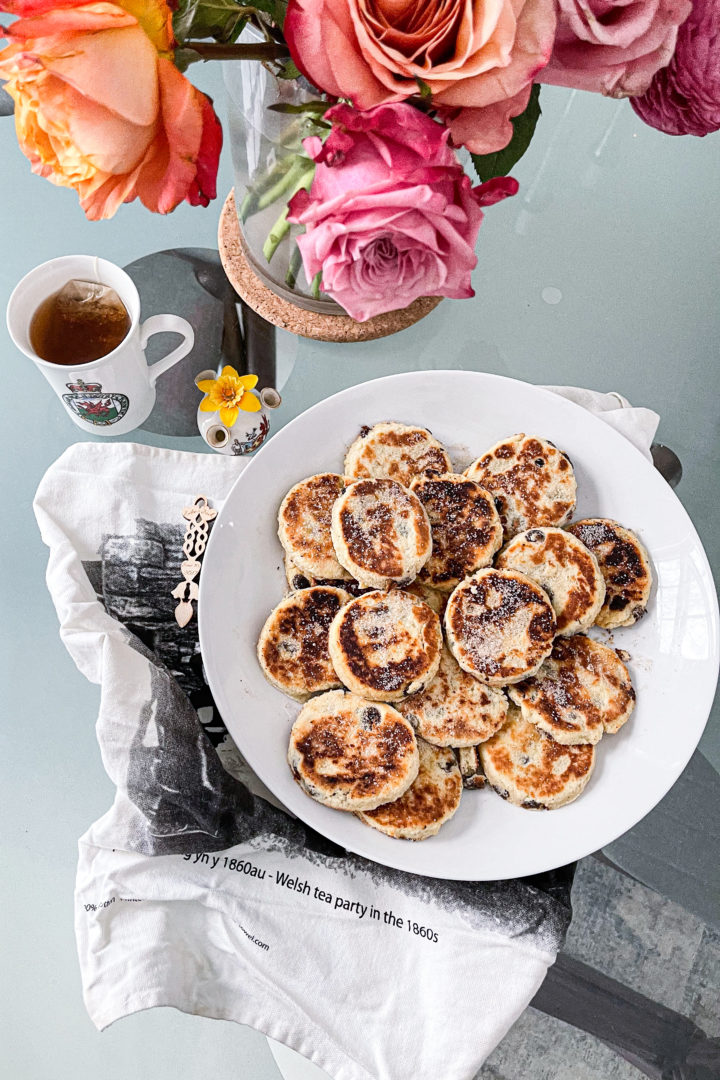
by Eden Cale
St. David’s Day is a Welsh holiday celebrated every year on March 1st, usually by wearing leeks and daffodils, displaying the flag of St. David, and dressing up in traditional costumes. But in my house, it’s celebrated by making (and eating lots of) Welsh Cakes!
Why are we discussing St. David’s Day, you might ask? Because unbeknownst to many, Eva and I share Welsh roots that run deep.
Eva’s mother’s father was Philip Leslie Tomalin, whose surname can be traced back to 1280 in Carmarthenshire, Wales, which just so happens to be my father’s hometown—and Merlin’s! Through Y-Chromosome DNA testing via Eva’s uncle, genealogists were able to confirm an exact match for 25 others that were living in Mid and North Wales at the time, making her a definitive member of the club.
Meanwhile, I hail from the Davies and Griffiths clans, whose ancestries we can trace back in Wales nearly a century. In fact, my father and most of his family still speak Welsh as their first language to this day. And despite having been born in New York City, I was given the very Welsh middle name Myfanwy (pronounced ‘miv-an-way’), and I continued the tradition with my son, whose middle name is Aneurin (pronounced ‘an-ny-rin’).
As you can see from my kvelling, I’m quite attached to my Welsh heritage.
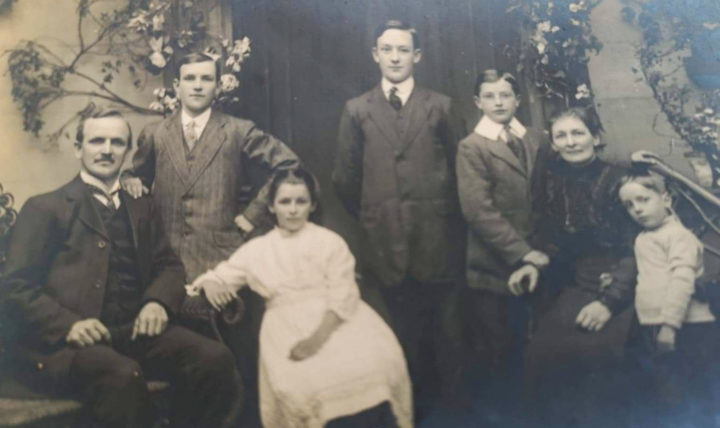


Since St. David’s Day is next week, I thought I’d take this opportunity today to share a little bit about Wales, its culture, and of course, how to make these delicious Welsh Cakes.
Wales is one of the four countries that make up the United Kingdom, although we call ourselves Cymru (pronounced ‘kum–ree’) which descends from a Brythonic word that means “fellow countrymen”. It’s also called The Land of Song by many, as music and singing are such a large part of our identity.
The Welsh language is notoriously difficult to fathom for non-speakers—I’ve been studying it for 15 years and I still have to ask my friends to translate! My first language achievement was learning to pronounce Llanfairpwllgwyngwyllgogerychwyrndrobwllllantysiliogogogoch. And no, I didn’t just randomly punch keys on my keyboard. That’s the real name of a town in Anglesey that translates to St. Mary’s Church in the Hollow of the White Hazel Near to the Rapid Whirlpool of Llantysilio of the Red Cave.
Traditional Welsh cuisine is a product of its people, who were historically working-class, with a limited number of ingredients available to them. Dishes like Cawl (‘ka-well’), which is a lamb stew cooked slowly over the course of the day, can be dated back to the 11th century. My personal favorite is Welsh Rarebit, which is mustardy, beer-braised cheese that’s cooked over a stove and poured over toast. My Great Uncle Davey and Aunt Mai had a BBC radio programme in the ’50s named after it! But neither of these can quite compare to the beauty that is Welsh Cakes, or ‘picau ar y maen’.
The best way to describe them is if a pancake and a scone had a delicious baby. They’re flaky, they’re buttery, they’re SO SO GOOD. When I make these, they’re gone in about 3 minutes, so if you plan to partake, best to be quick about it!
Even if you don’t celebrate St. David’s Day, these are the perfect snack to bake for the whole family. If you’re feeling extra fancy, brew a nice cuppa, break out your Mamgu’s good china, and throw a tea party!
ingredients…
(Makes two dozen 2.5″ Welsh Cakes)
- 3 cups All-Purpose Flour
- ¾ cup Sugar, plus more for garnish
- 2 tsp Baking Powder
- ½ tsp Nutmeg
- a pinch of Salt
- 1 cup Unsalted Butter, cold, and cut into pats
- 1 cup Raisins
- 2 Large Eggs, beaten
- 1/3 cup Milk of choice, I used Oat Milk
Step 1
Combine Dry Ingredients
In a large bowl, mix together the flour, sugar, baking powder, nutmeg, and salt.
Step 2
Add Butter
Add the butter into the bowl with dry ingredients and work it in with your hands until combined. Don’t worry if there are still a few larger pieces of butter in the mix.
Step 3
Add Raisins
Add the raisins and stir to combine.
Step 4
Mix Together
Add the milk to the eggs and stir to combine, and then add that to the dry ingredients with the butter and raisins, and stir to combine. It should look nicely moistened, but not wet. If your mixture is still too dry, add more milk 1 tsp at a time.
Step 5
Roll Out Dough
Turn the dough out on a well-floured surface and divide it in half. Cover one half with Saran Wrap and place in the fridge for the next day (believe me, you’ll thank me later when you devour the first batch and want more). Leave the other half and roll it out into a circle about 1cm thick.
Step 6
Cut Out Cakes
Using the rim of a cup that’s about 2.5” in width, cut the dough into circles. Gather and re-roll the scraps until all the dough has been cut.
Step 7
Dry-Fry
Heat a nonstick skillet over medium-low heat and dry-fry the cakes (no grease) for about 90 seconds on each side. I recommend testing the timing on one first, as every pot and stove vary in temperature. If the outside is burning, turn your stove down and shorten the cooking time.
Step 8
Cool
Transfer finished cakes to a rack to cool, and sprinkle with sugar, and enjoy with a good cuppa!

Welsh Cakes
Equipment
- A good nonstick pan
Ingredients
- 3 cup all-purpose flour
- ¾ cup sugar, plus more for garnish
- 2 tsp baking powder
- ½ tsp nutmeg
- ⅛ tsp salt
- 1 cup unsalted butter, cold, and cut into pats
- 1 cup raisins
- 2 large eggs, beaten
- ⅓ cup milk, I used oat milk
Instructions
- In a large bowl, mix together the flour, sugar, baking powder, nutmeg and salt.
- Add the butter into the bowl with dry ingredients and work it in with your hands until combined. Don’t worry if there are still a few larger pieces of butter in the mix.
- Add the raisins and stir to combine.
- Add the milk to the eggs and stir to combine, and then add that to the dry ingredients with the butter and raisins, and stir to combine. It should look nicely moistened, but not wet. If your mixture is still too dry, add more milk 1 tsp at a time.
- Turn the dough out on a well-floured surface and divide it in half. Cover one half with Saran Wrap and place in the fridge for the next day (believe me, you’ll thank me later when you devour the first batch and want more). Leave the other half and roll it out into a circle about 1cm thick.
- Using the rim of a cup that’s about 2.5” in width, cut the dough into circles. Gather and re-roll the scraps until all the dough has been cut.
- Heat a nonstick skillet over medium-low heat and dry-fry the cakes (no grease) for about 90 seconds on each side. I recommend testing the timing on one first, as every pot and stove vary in temperature. If the outside is burning, turn your stove down and shorten the cooking time.
- Transfer finished cakes to a rack to cool, and sprinkle with sugar, and enjoy with a good cuppa!
Nutrition
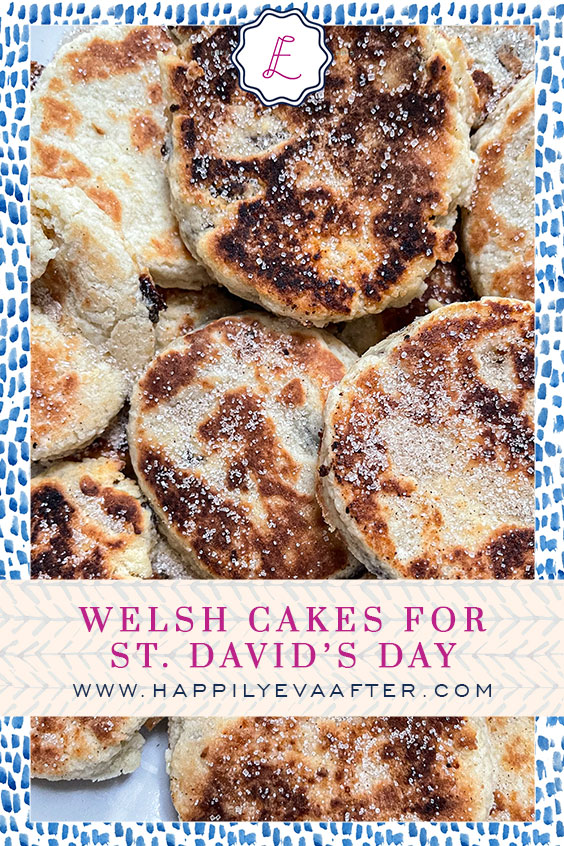
Photographs by Eden Cale | Happily Eva After, Inc. © 2021 All Rights Reserved
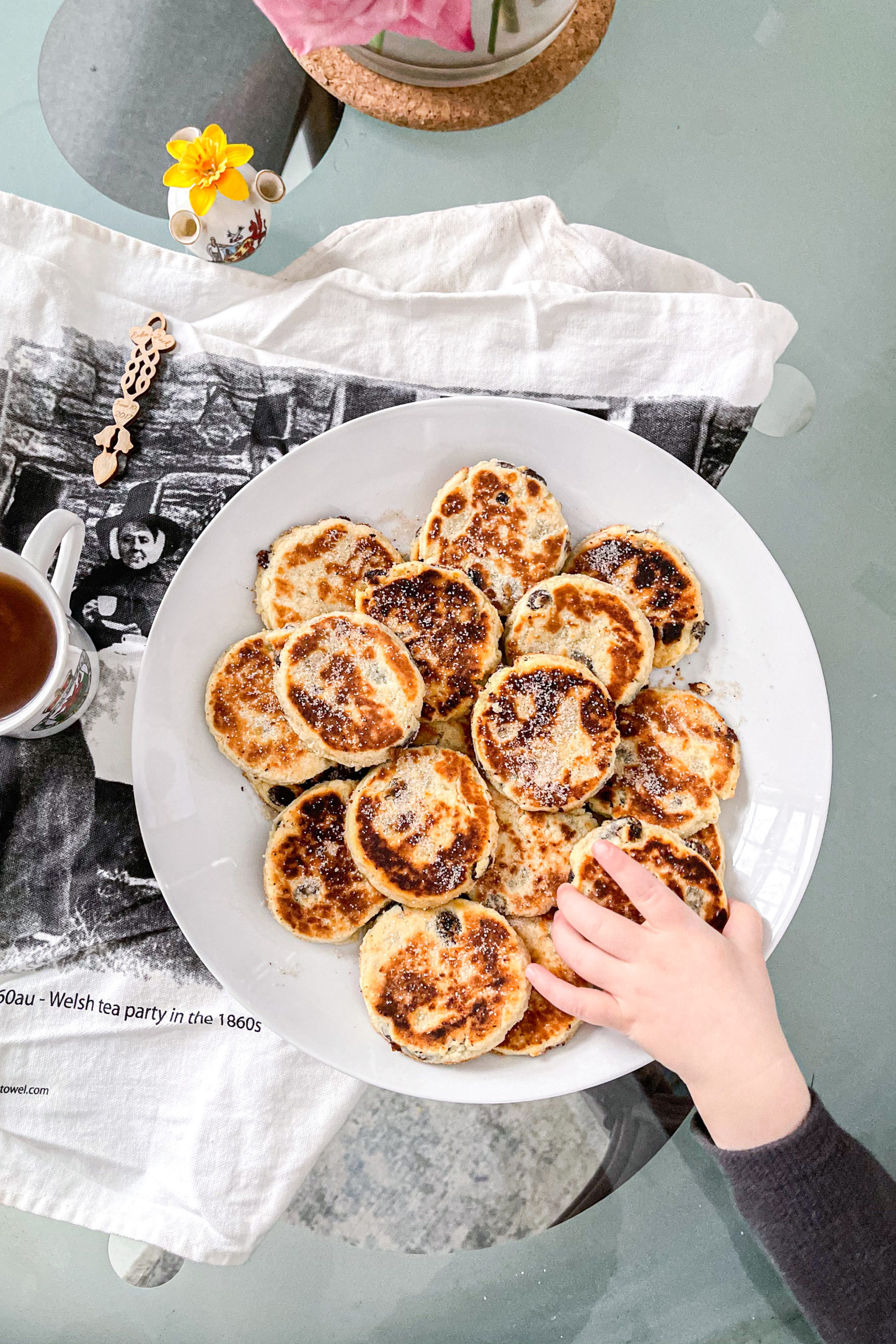
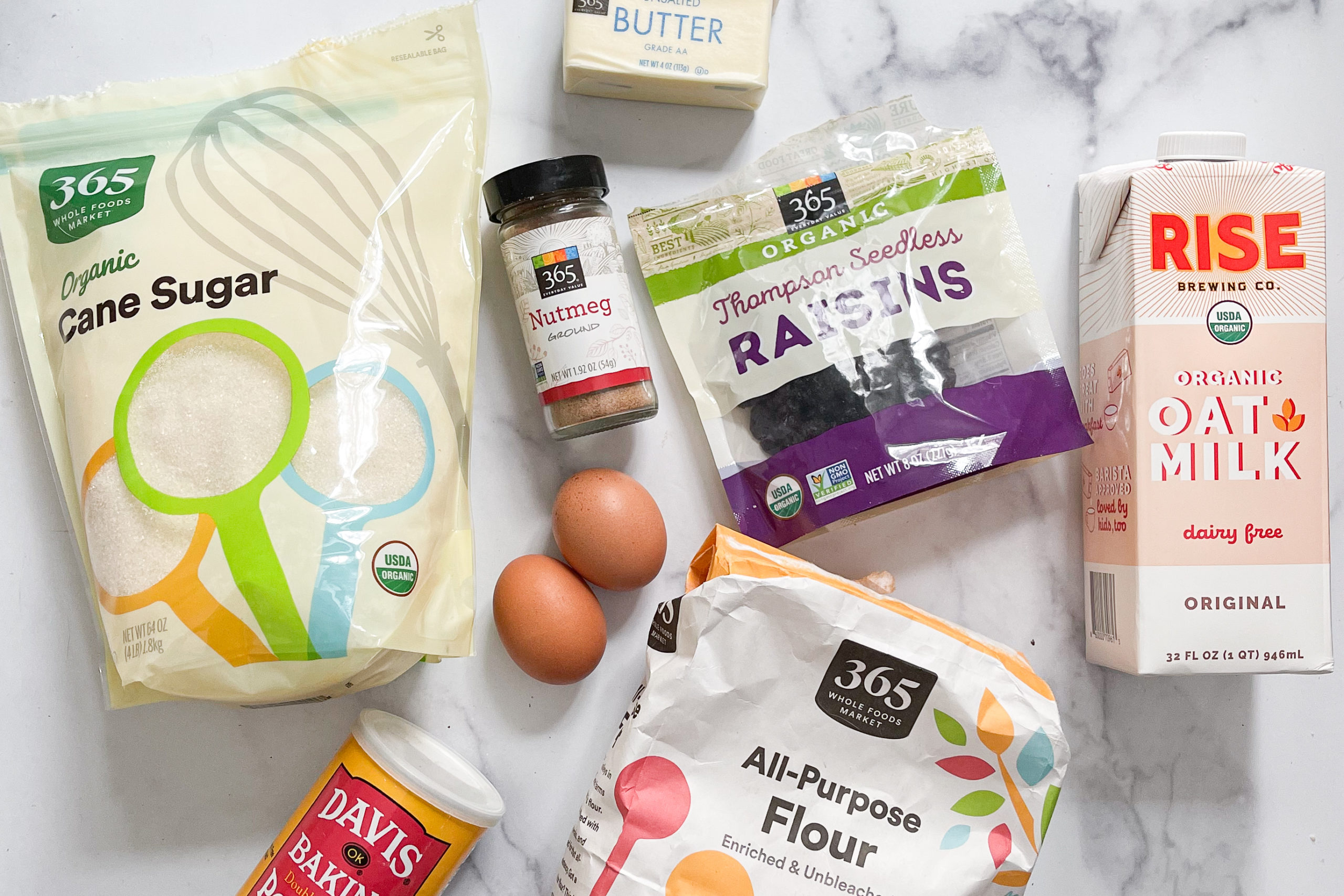

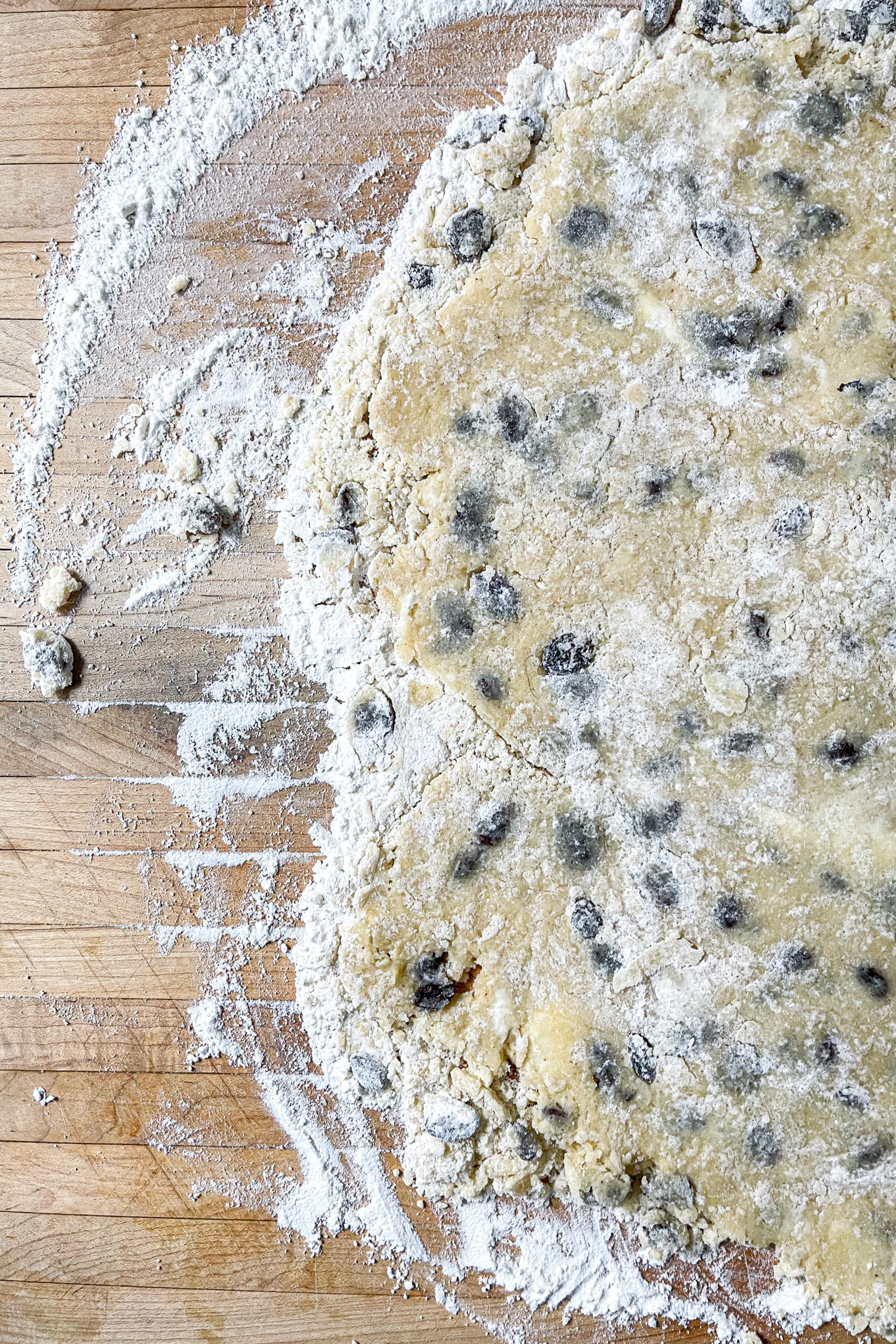

I’m so excited to try these! Thanks, Eden!
Yay! Let me know how they turn out!
I enjoyed learning about Wales and will try the cakes! So unique, I’ve never seen anything with that type of dough cooked in a pan, not baked.
So glad you enjoyed! Let us know if you give the recipe a try. And be sure to use a good nonstick pan!
I’m looking forward to trying these. The link to print is not working.